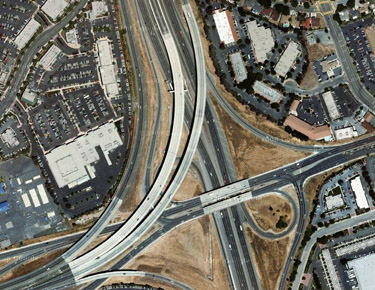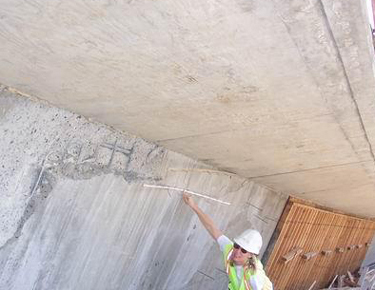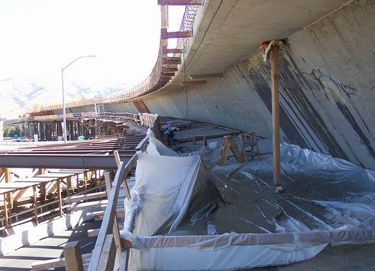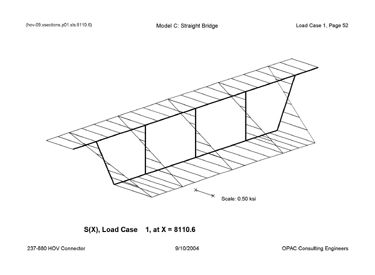Route 237-880 HOV Connector
Santa Clara County, California
Client:
Parsons
50 Fremont Street
Suite 1500
San Francisco
CA 94105
Tel.415-490-2400
Date:
Investigation completed 2005
Scope of work:
Engineering Investigation
Construction cost:
N/A
Services Performed:
- Review of engineering record
- Field observations
- Review of structural performance requirements
- Analytical studies of design
- Assessment of compliance of design
Issues:
- 3-D analysis of multi-cell box girder bridge on a curve alignment


The Route 237-880 HOV Connector located in Santa Clara, California directs high occupancy vehicles (HOV, or carpool) from southbound I-880 to westbound Route 237 and from eastbound Route 237 to northbound I-880. These are typical Caltrans high level ramp structures consisting of multi-cell box girders. The ramps are on a curved alignment. During construction, cracking, spalling, and delamination of the concrete were observed after post-tensioning operations at the interior-curve box girder web near a bent. As a result, resolution was necessary between the designer and the design checker to determine and eliminate these structural issues of concern for remaining structures and to identify applicable repair and/or strengthening method. Engaged by Parsons (the designer) in October of 2004, OPAC completed the following engineering tasks:
- Performed visual observation of the structure at locations of reported cracking.
- Performed 3-D structural analyses to assess the effects of curvature on the forces, moments, and stresses in the structure under dead load, prestressing and live load. The analyses addressed specific design and behavior issues, such as global effects in the box girder and local effects in the cross section, related to prestressed curved bridges that are not considered in a conventional analysis.
- Determined differences in structural behavior between straight and curved bridges, and provided refined estimates of stresses and strength demands in selected components of the structure.
- Evaluated the adequacy of the designed web reinforcing at the specified location to meet the structural demands due to combined loads including radial loads imposed by the post tensioning, as predicted by the 3-D analysis, and suggested remedial repair or strengthening measures.

